How to Clean a Wooden Cutting Board: Simple Steps for a Safe Board
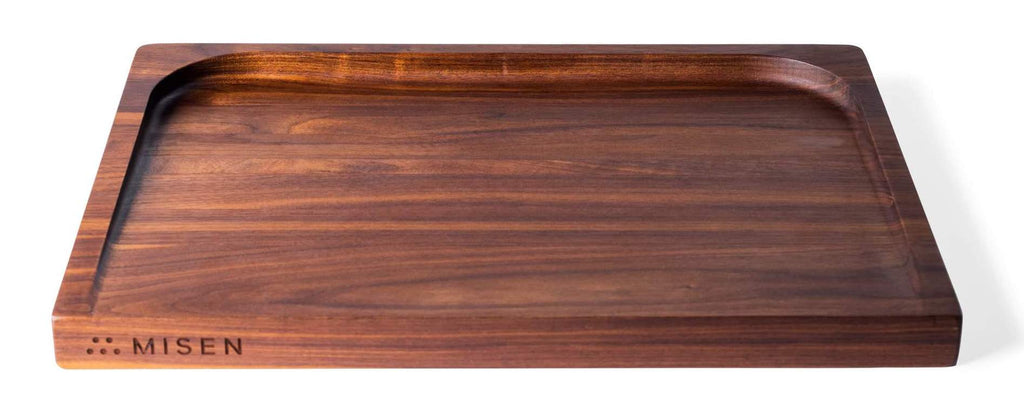 A beautiful cutting board can be the centerpiece of your kitchen.
A beautiful cutting board can be the centerpiece of your kitchen.
- A wooden cutting board requires hand-washing.
- A cutting board occasionally needs to be sanitized.
- Maintaining a cutting board is fairly simple and can greatly extend the life of the board.
A good wooden cutting board is the anvil to your hammer — the easel for your canvas. It's where a cooking journey begins, and it deserves care and respect as an esteemed member of your cookware society. While a plastic board may be economical, it deteriorates over time and can lead to a greater risk of contamination from food. A wooden cutting board is definitely the way to go, but as with many kitchen standards it requires maintenance.
Caring for a wood cutting board is as important as using it since caring for it guarantees its longevity and utility. However, caring for a board requires some steps that may not initially be intuitive.
Washing and Drying Your Cutting Board
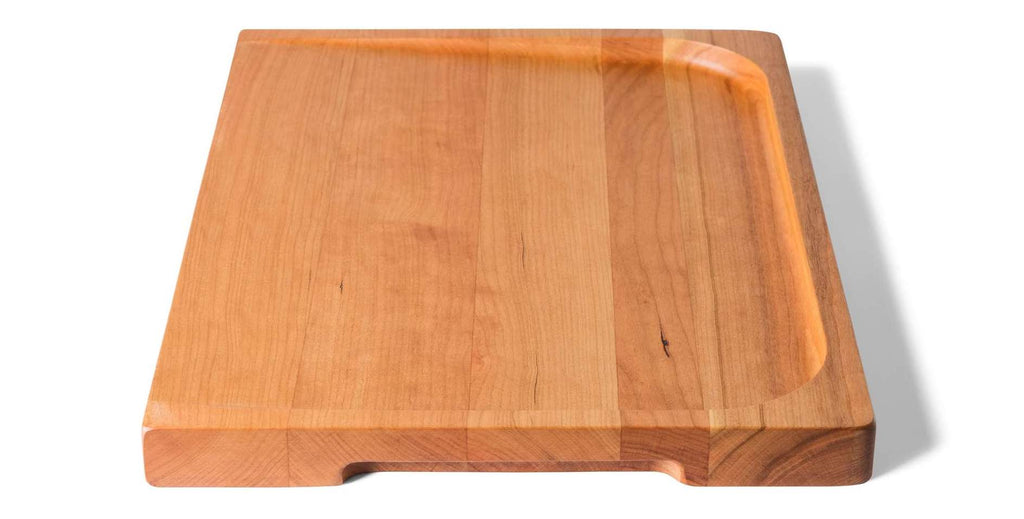 Don’t lay your cutting board flat to dry.
Don’t lay your cutting board flat to dry.
Before anything else, let's establish an iron rule for wooden cutting boards: they must be washed by hand. Regardless of how gentle your dishwasher may be, too much time exposed to heat and water will warp and eventually crack the board — leading to your board's untimely demise.
Fortunately, washing a cutting board by hand is no monumental feat: It's actually quite simple. Soon after you finish using the board, you should clean it. Cleaning it soon after use keeps stains and water from penetrating the wood. Take hot water (but not too hot), a washcloth or sponge, and ordinary dish soap. Scrub the board until any remaining food bits or coloration is gone and rinse it well to remove excess soap. Voilà! You now have a clean board.
Drying is equally important. It's best to air dry your board upright to ensure even drying. Some water will always get into the first layer of the wood, but air drying upright will allow it to escape evenly from all over the board. Drying the board with one side down, on the other hand, will allow water from the top to evaporate while water on the bottom will become trapped and may end up warping the wood.
Washing your board regularly and quickly after cooking, combined with a proper drying technique, will greatly reduce wear and tear on your board and keep it in good shape. However, every once in a while you may need to take stronger measures to ensure your board is the best it can be.
Sanitizing Your Board
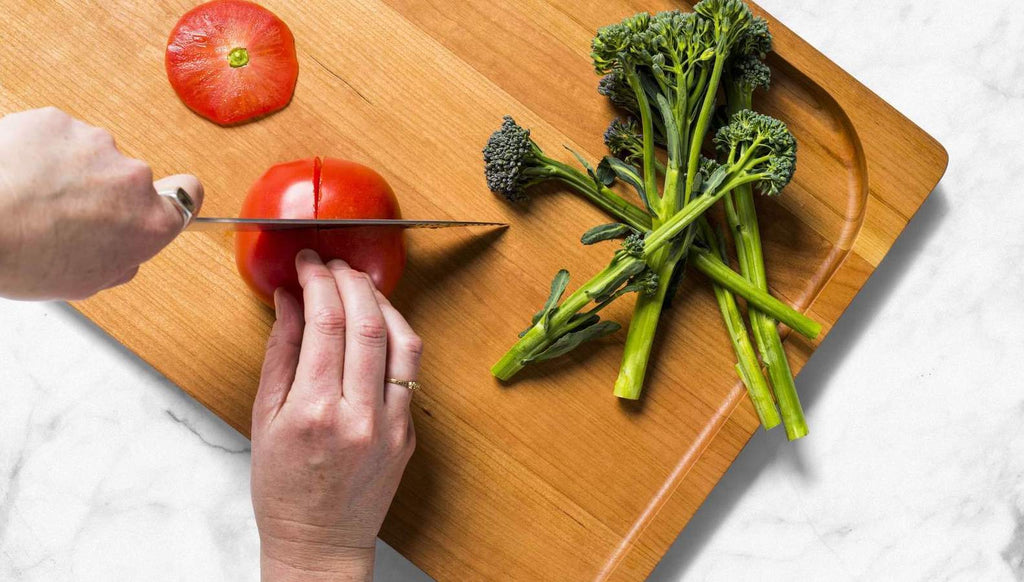 Having a clean board is crucial to food safety.
Having a clean board is crucial to food safety.
Occasionally, it's a good idea to sanitize your board. Sanitizing is different from a simple cleaning in that its goal is to prevent the growth of bacteria or mold in the board.
Choosing the right type of wood for your board will help reduce the need for sanitizing. Closed-grain wood, like cherry or walnut, keeps out water and potential contaminants much better than open-grain wood, like oak or ash.
Regardless, if you're concerned about contaminants from food like raw meat, sanitizing your board is simple.
You can use a spray bottle with a diluted white vinegar and water solution on your board to reduce and prevent contamination. White vinegar specifically is useful because it doesn’t have a lasting smell, unlike other types of vinegar. Because vinegar is acidic, it helps disinfect the board by killing bacteria and mold and preventing their further growth. It can also help deodorize your board.
Spray the board with a solution of 4 parts water to 1 part vinegar and wipe it down with a washcloth or sponge. Rinse it thoroughly before letting it air dry as described above.
We don’t recommend using bleach but if you insist on it, use a diluted concentration: A half teaspoon is plenty for a pint of water. Spray it on and wipe it off completely before rinsing with water. For safety's sake, never ever mix bleach with vinegar.
Maintaining Your Cutting Board
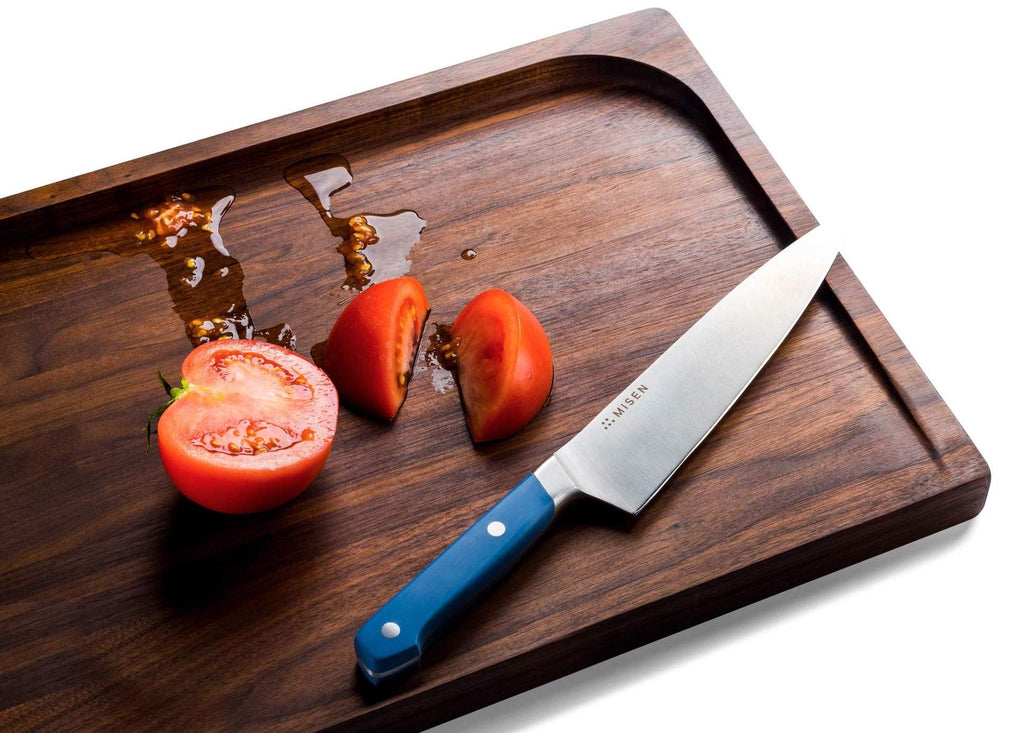 A well-maintained board can last years.
A well-maintained board can last years.
Maintaining a cutting board is crucial to ensuring the longevity of your board. Fortunately, doing so doesn't require a huge amount of effort — just the right kind of effort.
Wood naturally makes its own oils when it's part of a tree. When it's not, the oils eventually break down and dissipate. This means you'll need to add oil to your board occasionally. If you're using an edge-grain board like Misen's, you'll need to oil the board once or twice per year.
Oil serves a few important purposes:
- It prevents the board from cracking and warping.
- It stops water, which may contain contaminants, from entering the board.
- It keeps the board looking and feeling nice.
Mineral oil is one of a cutting board's best friends. Food-grade mineral oil is readily available online or in kitchen supply stores.
In addition to mineral oil, some people add beeswax. Beeswax is not necessary — mineral oil does the job just fine. However, beeswax isn’t harmful. It's all-natural, food-safe, and well trusted. You can often find products that combine mineral oil and beeswax.
The Maintenance Process
Before applying mineral oil, your board should be thoroughly clean and dry. If you're concerned your board isn't dry enough, give it some more time.
Applying the oil is simple. Pour some oil on a paper towel or gentle cloth. Rub it over all sides of the board. You'll notice the oil will soak in. Give it as many passes as you need until the oil no longer soaks in. Remove any excess with a clean cloth or paper towel and wait to use the board the next day. The oil will soak in thoroughly and create a protective barrier.
Do note that end-grain cutting boards will take considerably more oil than edge-grain boards.
Choose the Right Product
It's important to choose products that are known to be safe for wooden cutting boards. For reference, mineral oil is a byproduct of petroleum and is similar to petroleum jelly. It's an excellent choice for wood because it won't go rancid and doesn't have a lingering smell. Olive oil, for example, has a strong smell and can eventually go rancid, ruining your board.
Removing Stains From Your Board
Heaven forbid your board should develop a stain, but it's not the end of the world — or your board — if it does. Here are two DIY solutions to help keep your board stain-free.
Using baking soda or hydrogen peroxide can help lift stains off your board. If you wish to use baking soda, simply sprinkle some baking soda on your board to begin. Pour some water on a washcloth and scrub the stained area with the cloth. With a bit of scrubbing, the stain should come out.
If you choose to use hydrogen peroxide, dilute it in water or choose a low-concentration level like 3%. Apply it to a washcloth or sponge and scrub the board thoroughly wherever there is a stain. Make sure to rinse the board well before letting it stand up to dry.
Alternatively, combining coarse salt — like kosher salt — with a lemon can also help remove stains from your board. Add the salt to the stained area and scrub it with a lemon that's been cut in half. The acid from the lemon combined with the abrasiveness of the salt can remove stains, especially those that aren't too deep.
You’ll Never Get Board
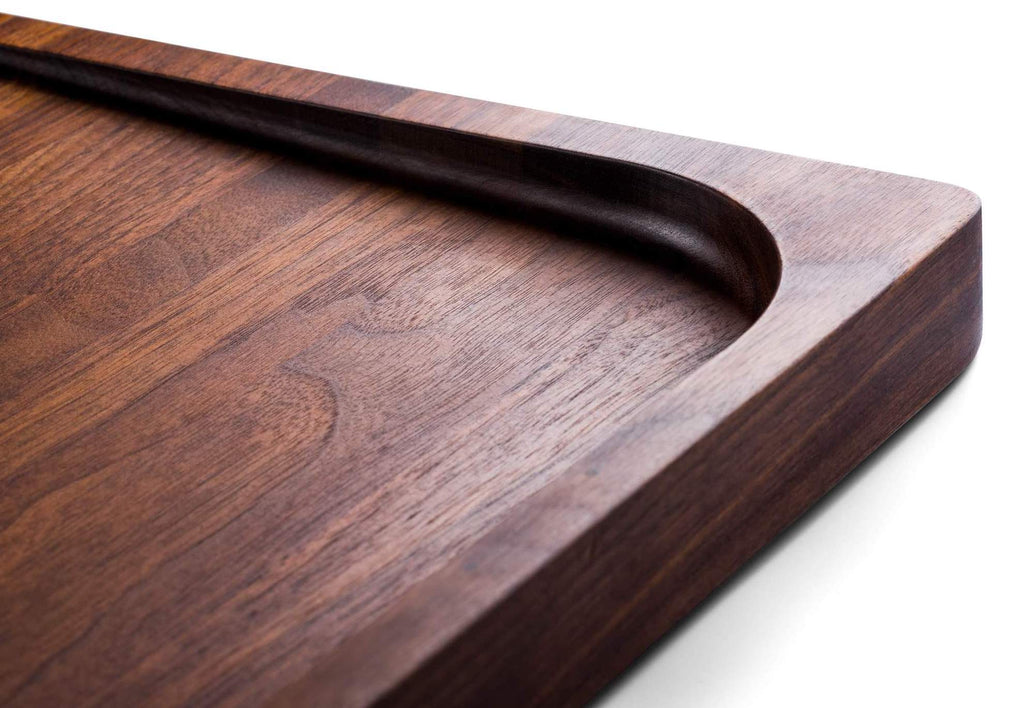 A trenched board prevents spills.
A trenched board prevents spills.
Taking care of your board will keep it in tip-top shape and will make your cooking life a breeze. It’s fairly simple and can easily become a regular part of your kitchen maintenance routine.
With the right board and the right knife, you’ll be on your way to kitchen mastery.








